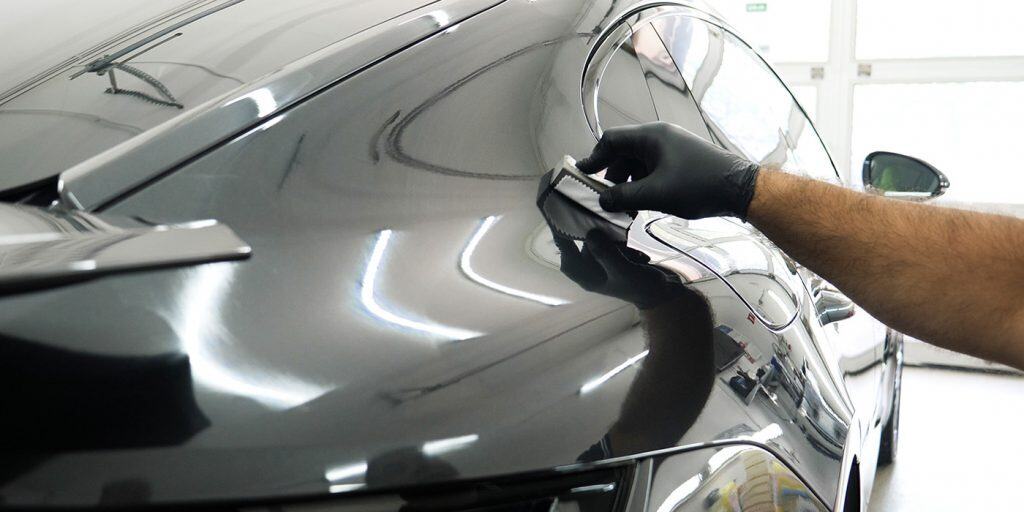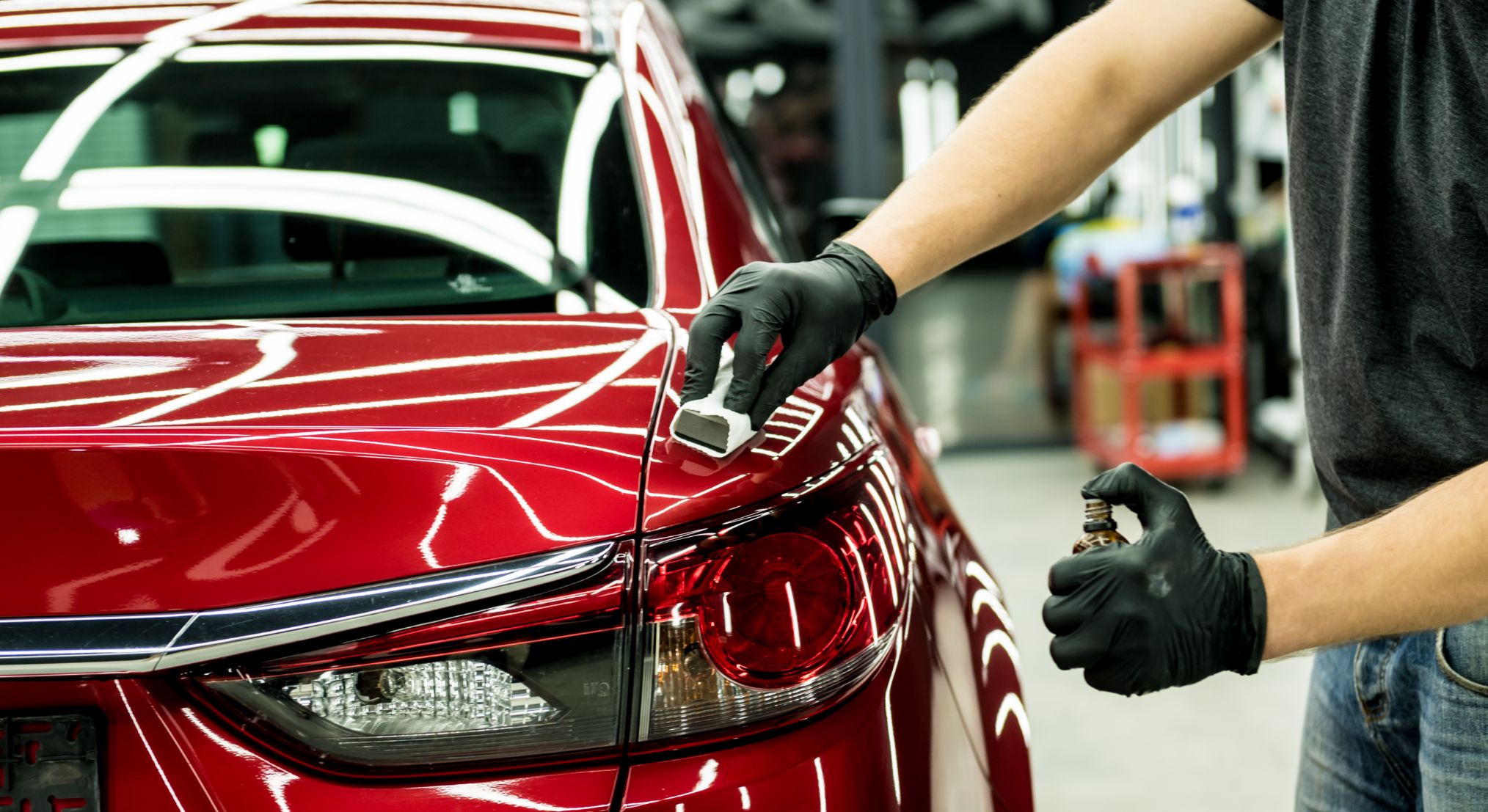How Ceramic Coating Enhances Your Vehicle's Protection and Appearance
How Ceramic Coating Enhances Your Vehicle's Protection and Appearance
Blog Article
Ceramic Coating vs. Conventional Wax: Which Supplies Much Better Long-Term Protection?
The dispute in between ceramic coatings and conventional wax for automobile defense has actually gathered substantial focus amongst auto fanatics and specialists alike. While both offer the objective of guarding paint, their distinctions in resilience, application, and long-term upkeep expenses might affect a consumer's selection. Ceramic finishes flaunt premium long life and resistance to environmental variables, yet the complexity of their application questions concerning accessibility and practicality. As we explore these contrasting alternatives, it comes to be important to take into consideration not just the instant benefits yet likewise the ramifications for vehicle treatment gradually.
Summary of Ceramic Coating
Ceramic layer has gained substantial popularity amongst automotive fanatics and detailers alike because of its innovative protective qualities. This cutting-edge innovation is designed to create a durable, hydrophobic guard over an automobile's paint surface, dramatically enhancing its resistance to environmental contaminants such as dust, UV rays, and chemical discolorations. Unlike standard wax, which supplies a short-term layer of defense, ceramic finishes bond at a molecular degree with the paint, providing resilient longevity-- usually extending beyond two years with proper upkeep.
The application process entails careful preparation of the car's surface area, consisting of cleansing and polishing to ensure optimal attachment. Once used, the layer remedies to form a durable layer that not only includes deepness and gloss to the paint however also streamlines maintenance. With its hydrophobic homes, ceramic finish permits water and dust to glide off even more easily, lowering the regularity of washes and decreasing the threat of swirl marks.
Additionally, ceramic finishes are readily available in numerous formulations, enabling individuals to pick products customized to their specific requirements and preferences. In general, ceramic covering stands for a considerable advancement in paint security innovation, delivering superior efficiency contrasted to standard choices.
Summary of Typical Wax
Commonly considered a staple in vehicle treatment, wax works as a popular option for those seeking a straightforward method to improve and safeguard their lorry's paint - ceramic coating. Automotive wax commonly consists of natural ingredients, such as carnauba, or artificial substances, designed to produce a protective layer on the surface area of the paint. This layer not just enhances the car's gloss and radiate but likewise provides a barrier against ecological impurities
The application of wax is generally easy to use, making it easily accessible for both experts and DIY enthusiasts. As soon as used, wax requires a healing period, after which it hardens to form a protective covering.
Nevertheless, while wax works for improving the aesthetic appeal of a lorry, it is vital to keep in mind that the defense it offers might demand much more constant reapplication compared to different items, such as ceramic layers. Overall, conventional wax remains a favored choice for those focusing on simplicity of usage and instant visual renovation.
Resilience and Long Life Contrast
While both ceramic finishes and conventional wax deal protective advantages for automotive paint, their durability and longevity differ considerably. Standard wax, typically made from natural carnauba or artificial polymers, usually supplies a safety layer that lasts approximately three to 6 months. This reasonably short life-span requires normal reapplication to keep ideal security.
On the other hand, ceramic layers are crafted from innovative nanotechnology, creating a covalent bond with the paint surface area. This leads to a robust, hydrophobic layer that can endure for 2 to 5 years, depending upon the product and environmental problems. The premium longevity of ceramic layers is credited to their chemical framework, which provides enhanced resistance to scrapes, UV rays, and oxidation.

Defense Versus Environmental Aspects
Securing a vehicle's paint from ecological elements is critical for preserving its look and value gradually. Vehicles are regularly revealed to a range of components, including UV rays, bird droppings, tree sap, acid rain, and roadway grime, all of which can endanger the honesty of the paintwork.
Ceramic finishings give a robust defense versus these environmental aggressors. Unlike standard wax, which can weaken rapidly under UV direct exposure, ceramic coatings form a long lasting, hydrophobic layer that stands up to the hazardous impacts of sunshine and toxic wastes. This sophisticated modern technology creates a chemical bond with the car's surface area, supplying superior protection you could try here that lasts for many years, even in severe problems.
Conventional wax, while simpler to use, typically needs frequent reapplication and provides restricted resistance to impurities and UV rays. Over time, it can break down, leaving the paint prone to scrapes and oxidation. In comparison, ceramic finishings preserve their protective top qualities much longer, significantly minimizing the danger of paint damages and ensuring that the top article vehicle retains its aesthetic allure. Consequently, ceramic layers are increasingly identified as the premium selection for long-lasting security against environmental elements.
Application and Maintenance Differences
The techniques of application and succeeding maintenance for ceramic layers and standard wax vary substantially, impacting the general user experience and performance of each product. Ceramic finishes require an even more detailed application process, commonly involving surface prep work that includes washing, sanitizing, and polishing the automobile. Once the surface area is prepared, the ceramic layer is used in a controlled environment, usually requiring expert expertise to ensure appropriate healing and bonding to the paint.

While both items boost lorry look, the longer-lasting defense offered by ceramic coatings may justify their initial investment, despite the more demanding application process. Conversely, traditional wax remains a popular option for those looking for an easier, albeit temporary, option.

Final Thought
Finally, ceramic layers show substantial advantages over conventional wax in terms of toughness and environmental management. With a life-span expanding two to 5 years and premium resistance to UV rays, dirt, and chemical spots, ceramic coatings use a more effective solution for long-term car maintenance. Although the application process may call for expert expertise, the resulting price financial savings and minimized frequency of reapplication underscore the worth of ceramic layers for those looking for optimal vehicle defense.
The dispute between ceramic layers and standard wax for vehicle defense has garnered substantial attention amongst automobile enthusiasts and experts alike. Unlike traditional wax, which gives a momentary layer of protection, ceramic finishes bond at a molecular level with the paint, supplying lasting durability-- usually prolonging past two years with appropriate maintenance.
While both ceramic finishes and traditional wax offer safety benefits for auto paint, their sturdiness and long life differ substantially. For vehicle lovers looking for long-term security, ceramic layers present a compelling benefit over traditional wax products.
In verdict, ceramic coverings show substantial benefits over typical wax in terms of toughness and ecological security.
Report this page